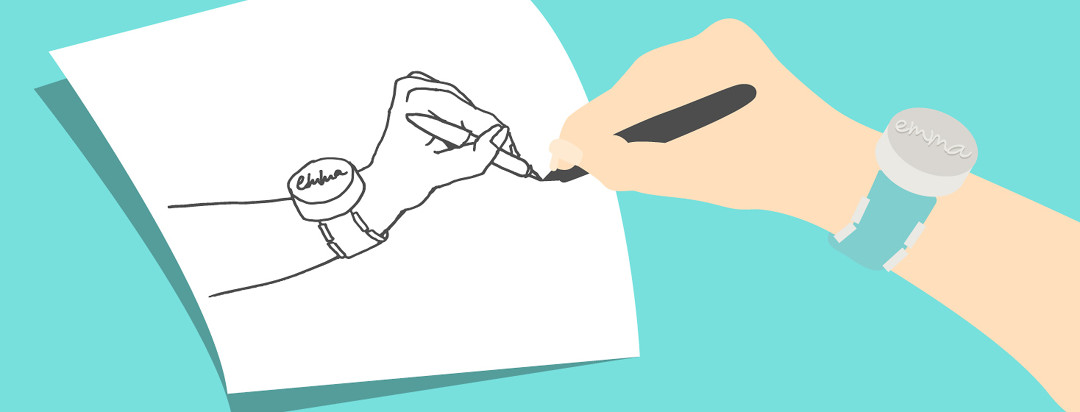The Emma Watch: A Wearable Device to Ease PD Tremors
Editor's Note: The Emma Watch was a prototype designed by Microsoft specifically made for someone with PD. Unfortunately, it is uncertain if a commercially available product will be made.
Microsoft researchers have developed technology using vibrating motors that can fool the brain and distract it from the physical sensation of tremors. The wrist-worn device, called the “Emma Watch”, is designed to significantly reduce tremors associated with Parkinson’s disease (PD).1
The technology issues a rhythmic vibration using small motors wrapped around the wrist.2
Who is Emma?
Project Emma is named after Emma Lawton, a young woman with early-onset Parkinson’s who was diagnosed in 2013 at age 29. A graphic designer, Emma was finding it difficult to draw and write with tremors.3 Tremors are a hallmark trait of Parkinson’s disease, a neurodegenerative motor disorder that affects nerve cells in the brain. People with PD generally experience motor and non-motor symptoms that can affect daily living.
Haiyan Zhang, Innovation Director at Microsoft Research in Cambridge, England, and her team developed the biomedical wearable device. As part of a documentary series, Zhang was challenged by the BBC to develop a device to help Emma perform simple tasks with her hands. 3,4
The initial concenpt
Zhang and Lawton met in London to learn about each other, and for Zhang to observe how Parkinson’s affected Lawton. Zhang discerned that the constant tremors interfered with Lawton’s ability to work as a graphic designer. Zhang was able to understand her personal needs as well as conceive of potential technological capabilities.1,5
Device prototypes were created to ease tremors, allowing for a return of dexterity.5 As she worked out the technology solution, Zhang designed the device to have interchangeable colored straps, making it practical and stylish, both expressed desires of Lawton.2
How does the Emma Watch work?
Just as Parkinson’s has no known cause or cure, the specific mechanism of action used in the Emma Watch is not fully understood. When wearing the device, Lawton was able to see her hand tremors but couldn’t feel them. It is thought that the vibrations from the watch replaced the physical sensation of the tremor.4
Movement is regulated by a sensorimotor feedback loop, involving the perception of movement and position of the body.2 Neurologists think that Parkinson’s tremors could be caused by an error in the feedback loop where the brain may be trying to overcompensate for the initial error, resulting in ongoing tremors.
The Emma Watch initiates vibrations that act as white noise, thereby interrupting the sensory feedback loop, which prevents the brain from sensing the error and trying to overcorrect.2 Zhang explained to the BBC that she believes when wearing the watch Emma’s brain doesn’t sense hand tremors, and is therefore no longer trying to stop her hand from moving.1
Corporate innovation
Satya Nadella, Microsoft’s CEO has made inclusive design a central value in the business model of the company. Microsoft is using elements of machine learning, natural language processing and other cognitive services that reflect human abilities along with modern technology to develop new products and services.
Zhang is part of the Maker Movement, a group that combines do-it-yourself creativity with the engineering accomplishments of modern technology. She now sees her Microsoft role in the same way, using technology to think differently about advances that improve people’s lives.3
The Emma Watch is one of a kind. Zhang and her team hope to use technology and artificial intelligence to develop a device that detects and counteracts other symptoms of Parkinson’s like rigidity, slowness of movement, and problems with balance.5
The future of the Emma Watch
Still in the research stage, additional tests are being conducted to evaluate the effectiveness of the device on different people with Parkinson’s. The Emma Watch addresses Emma Lawton’s specific symptoms. Future technology may be able to help more people with movement disorders.2
The list of people requesting the Emma watch and/or offering to participate in new trials is growing.

Join the conversation